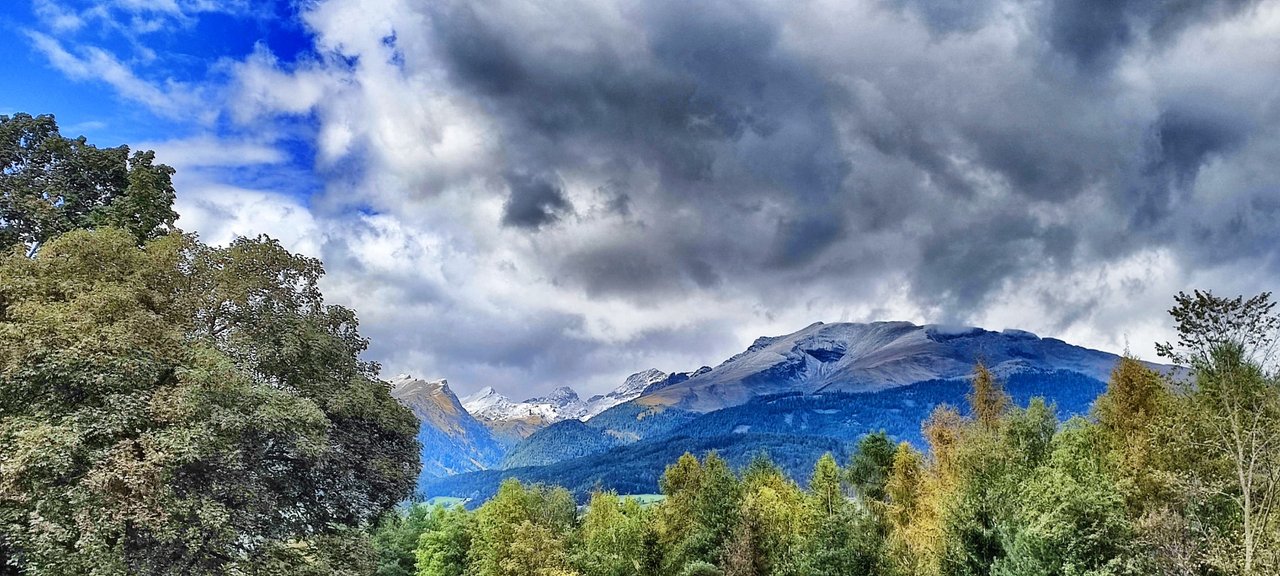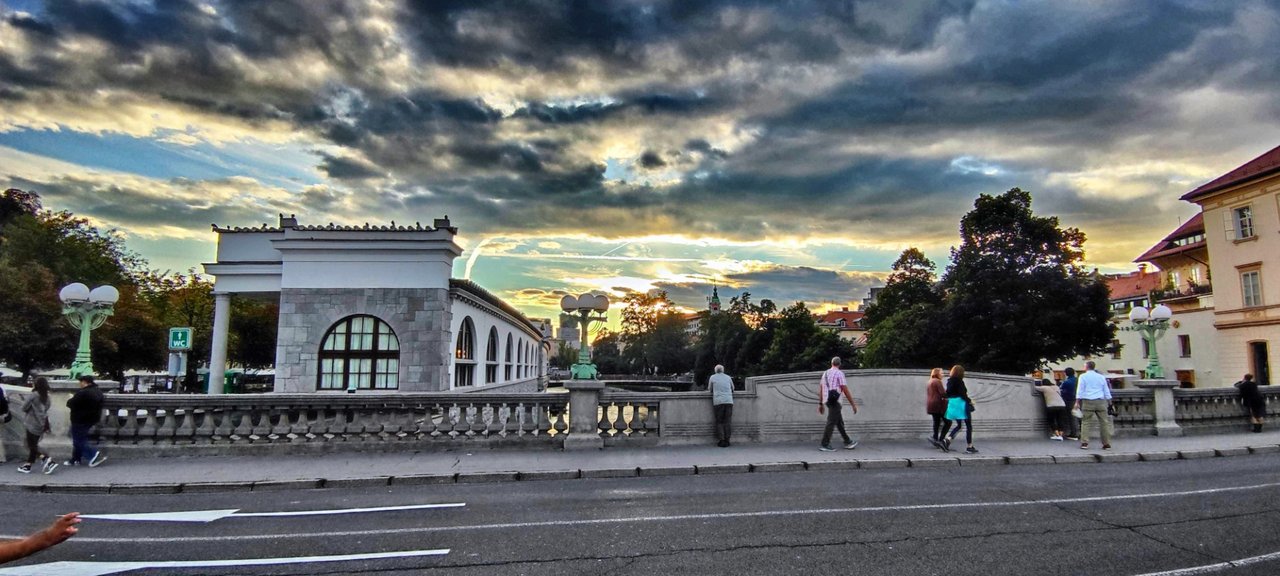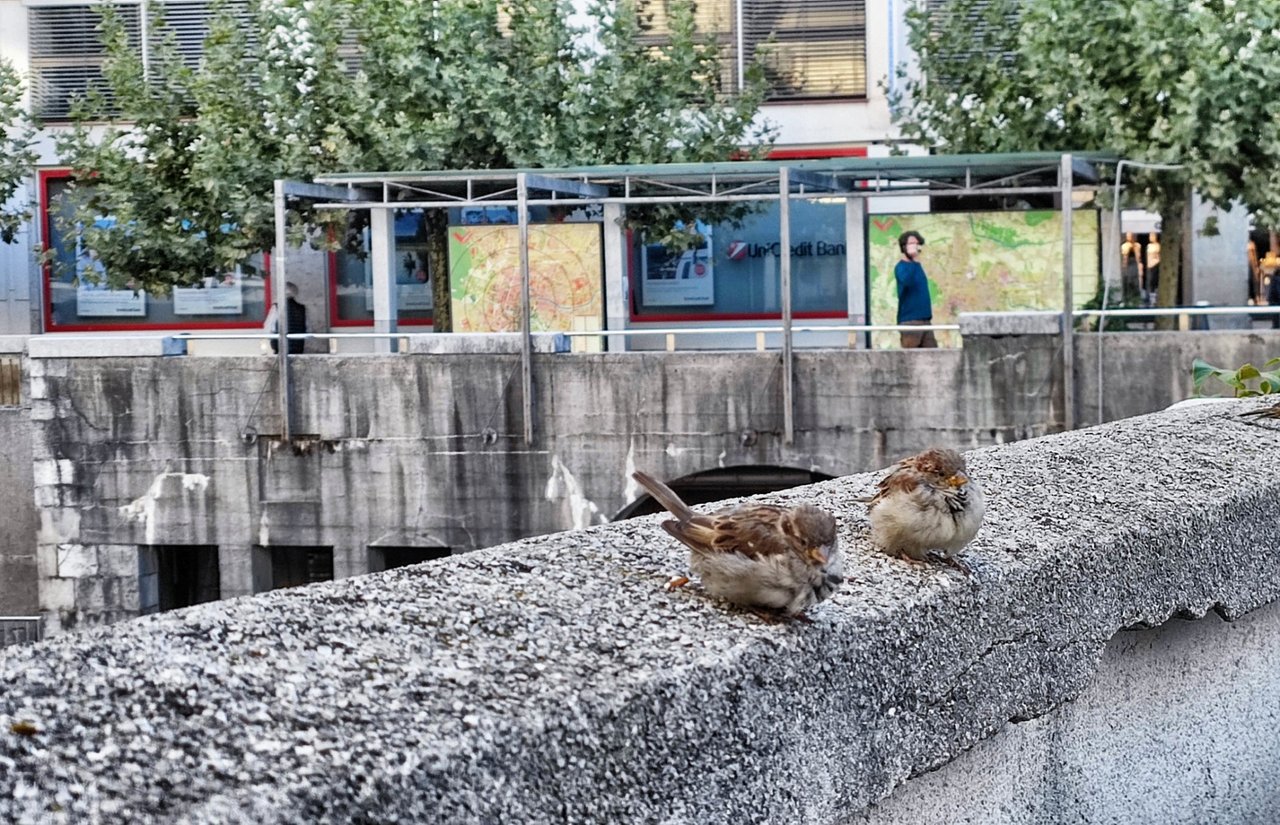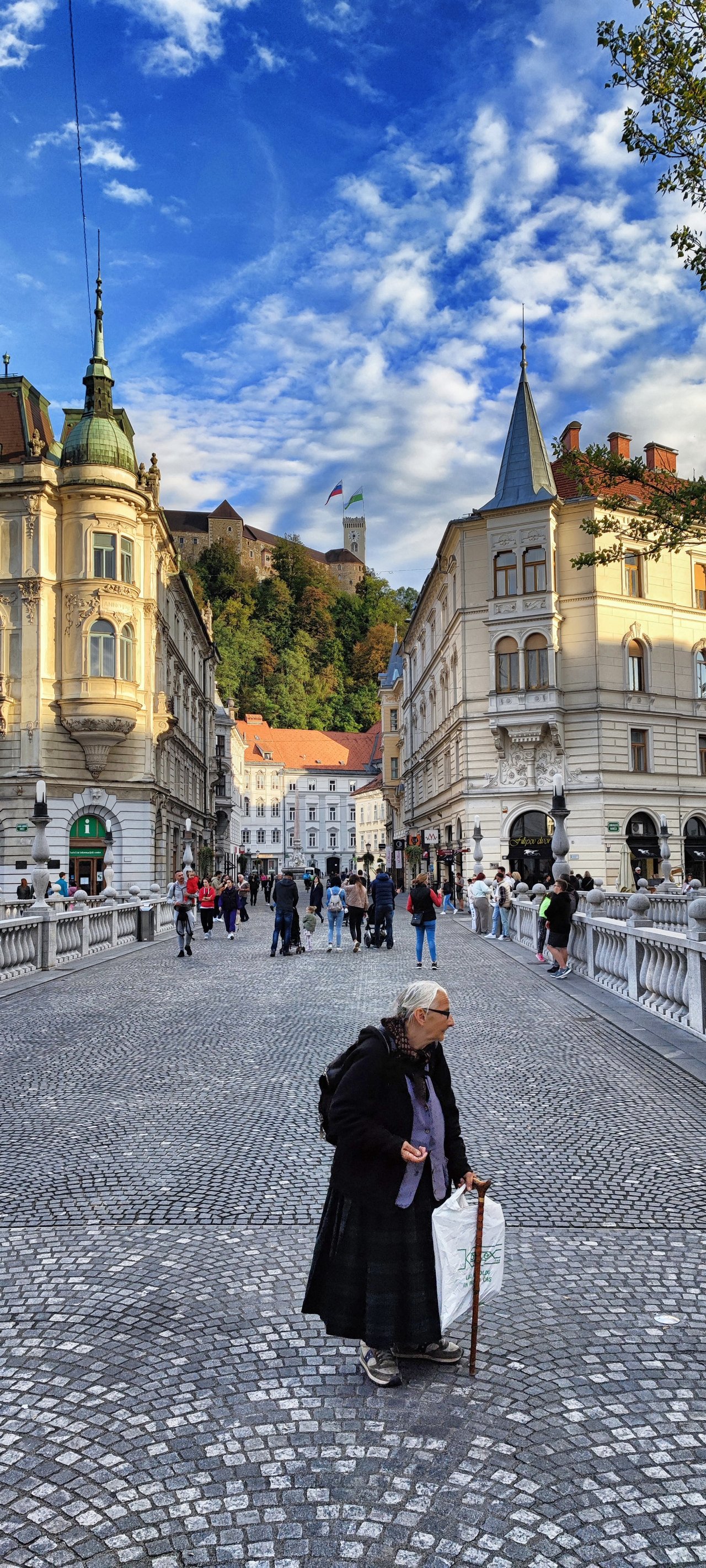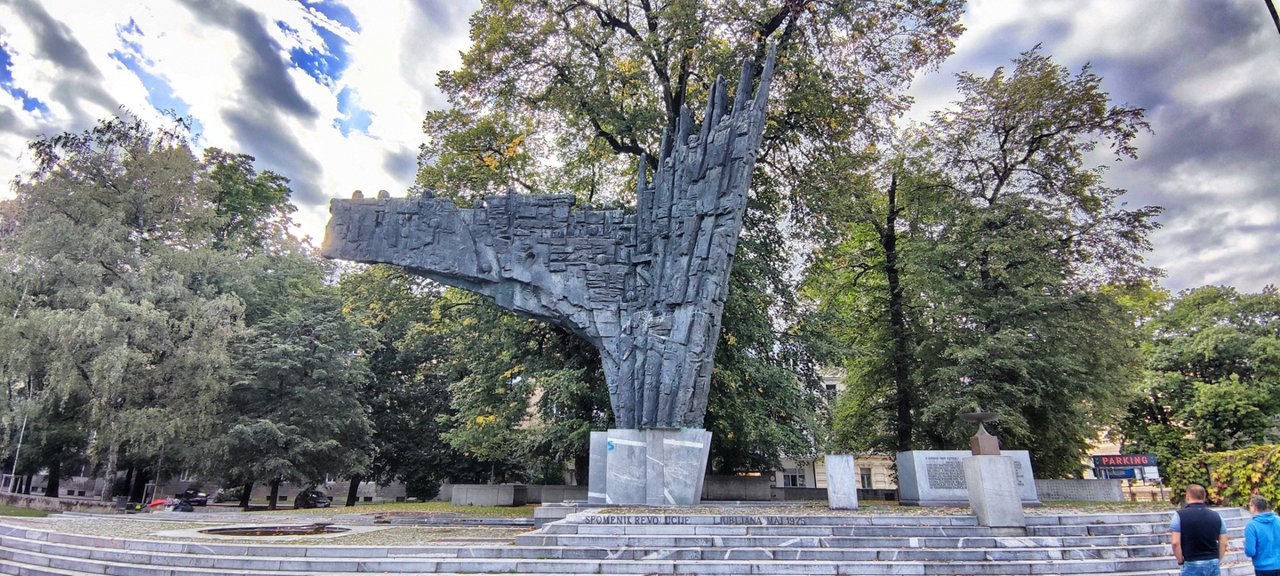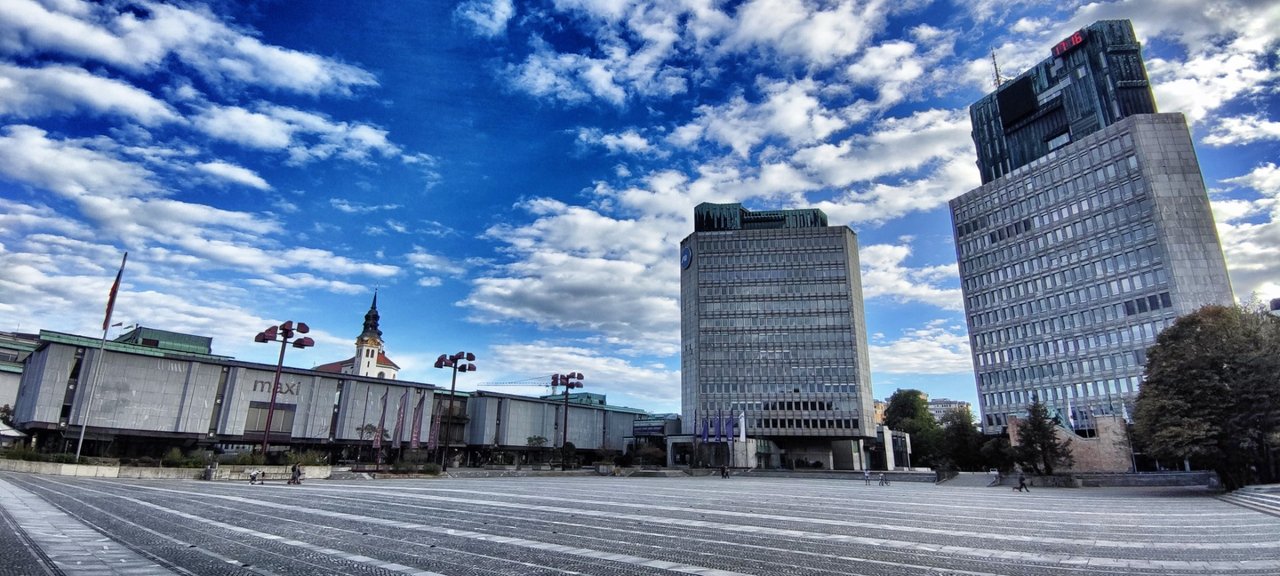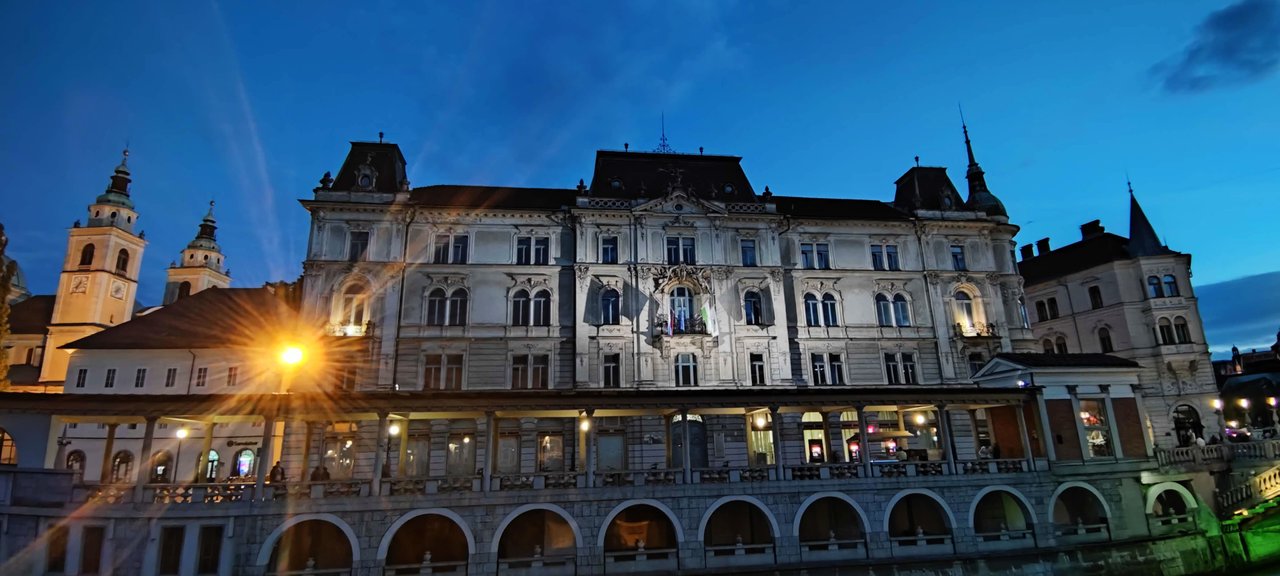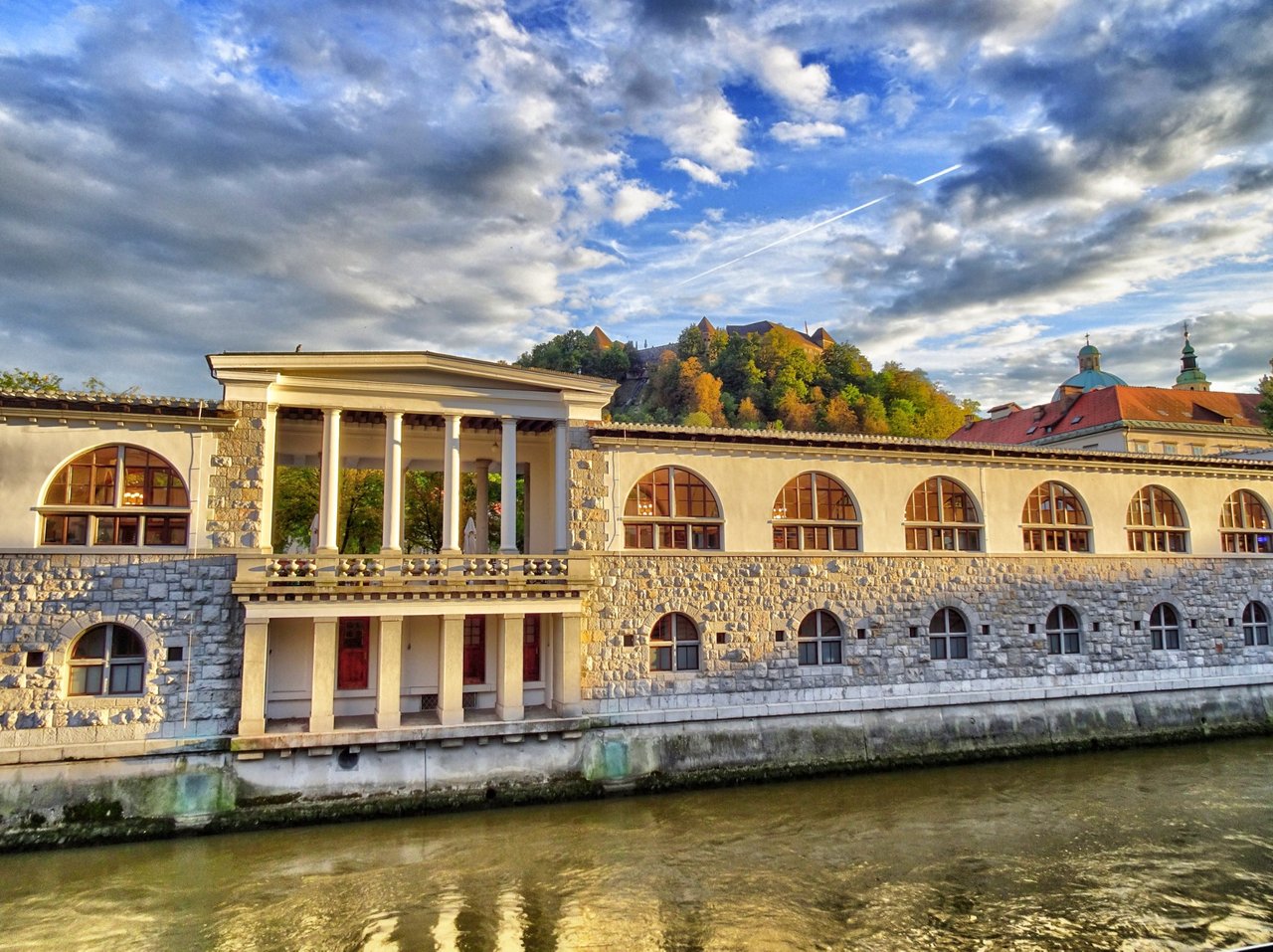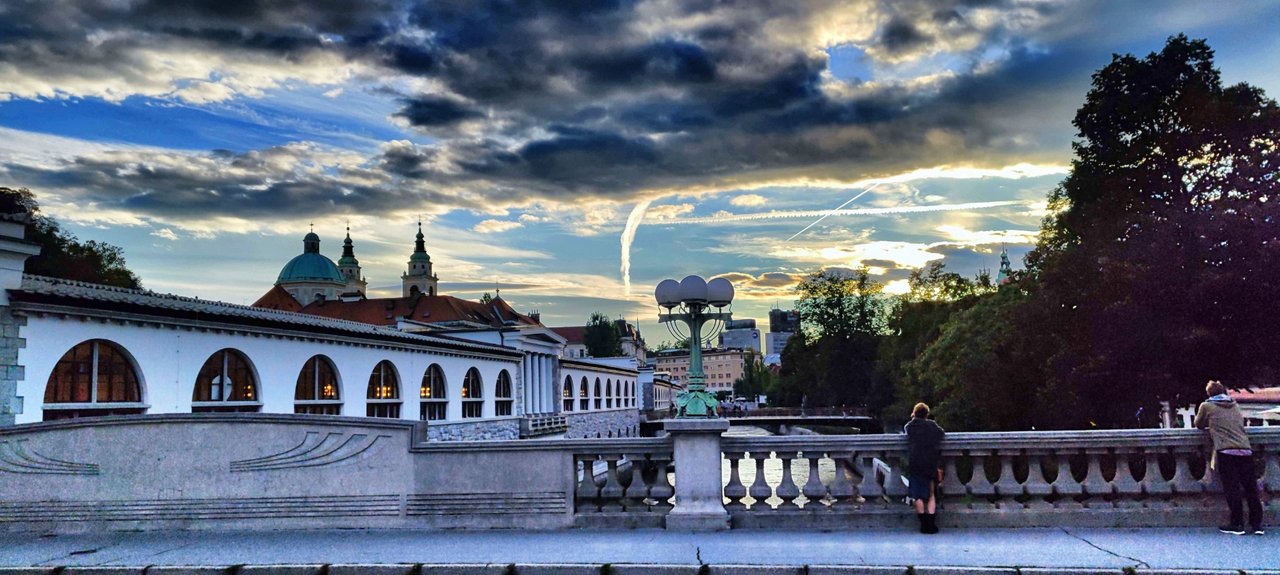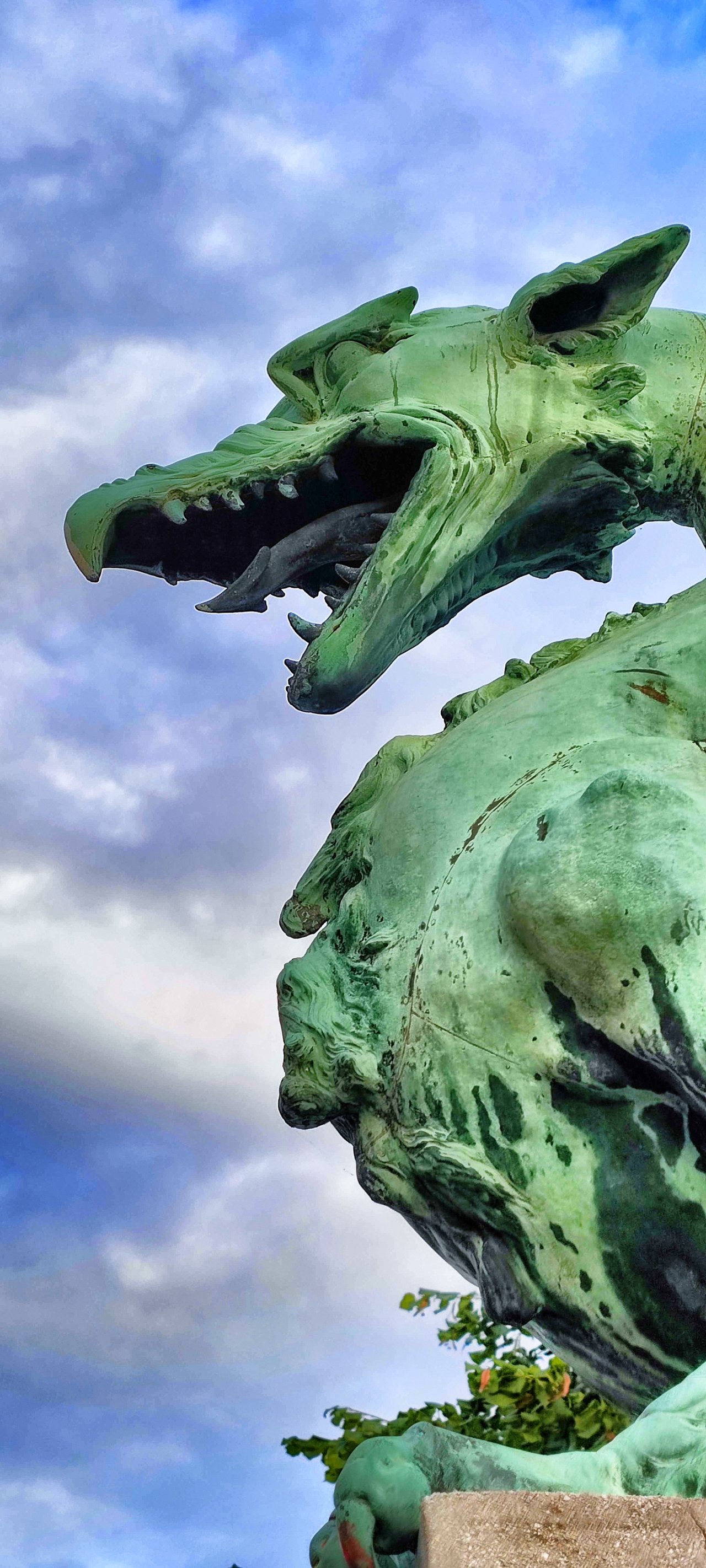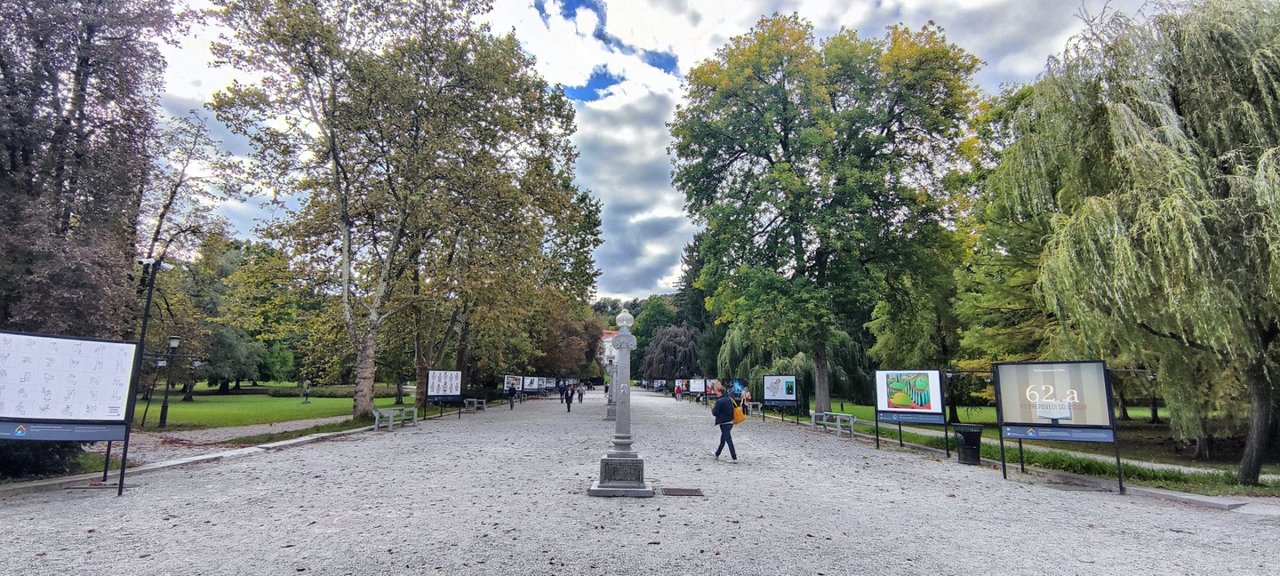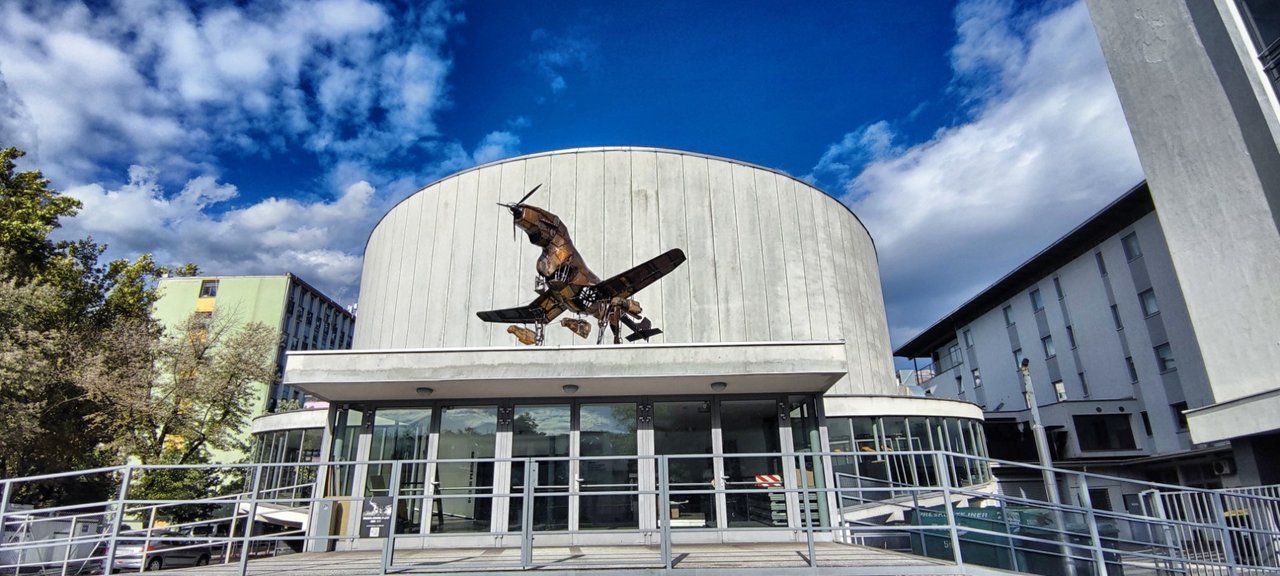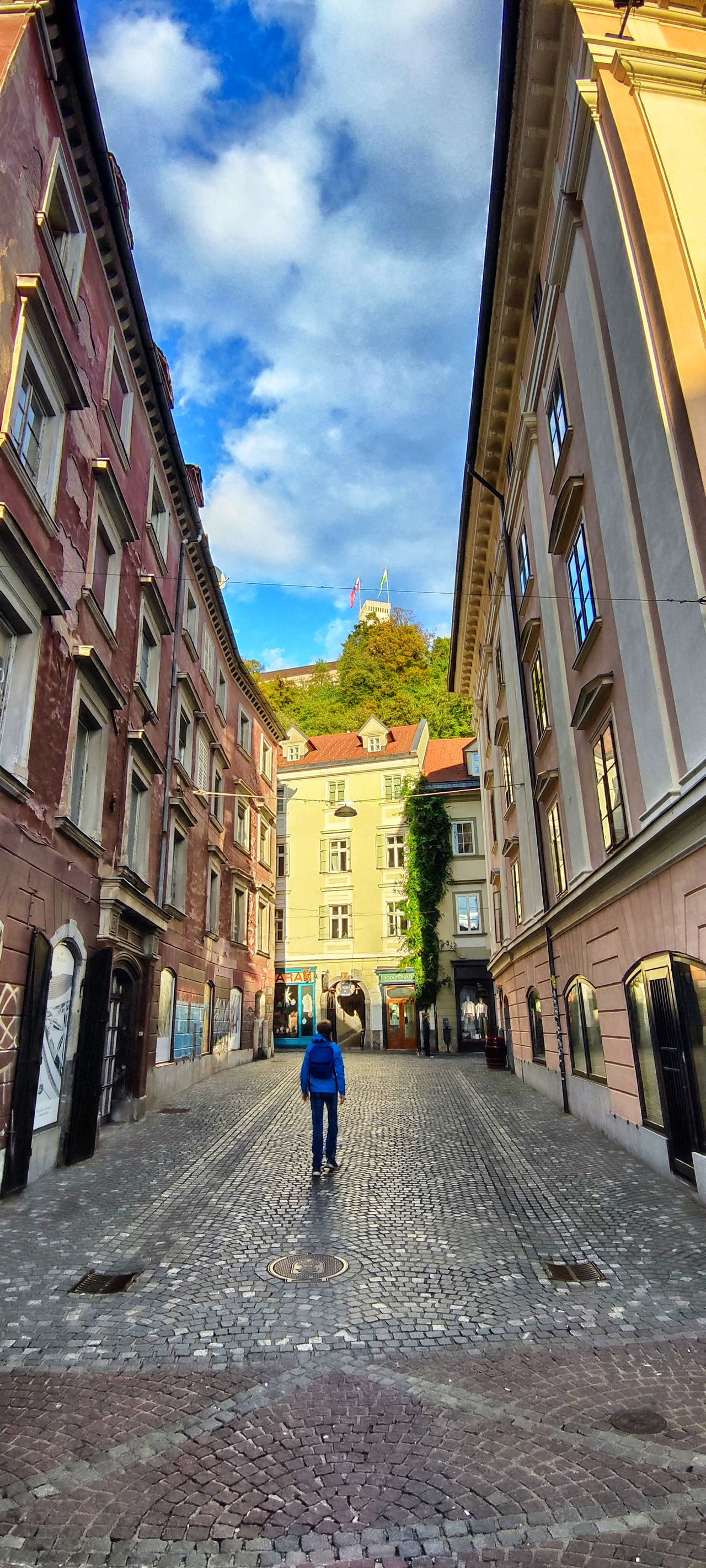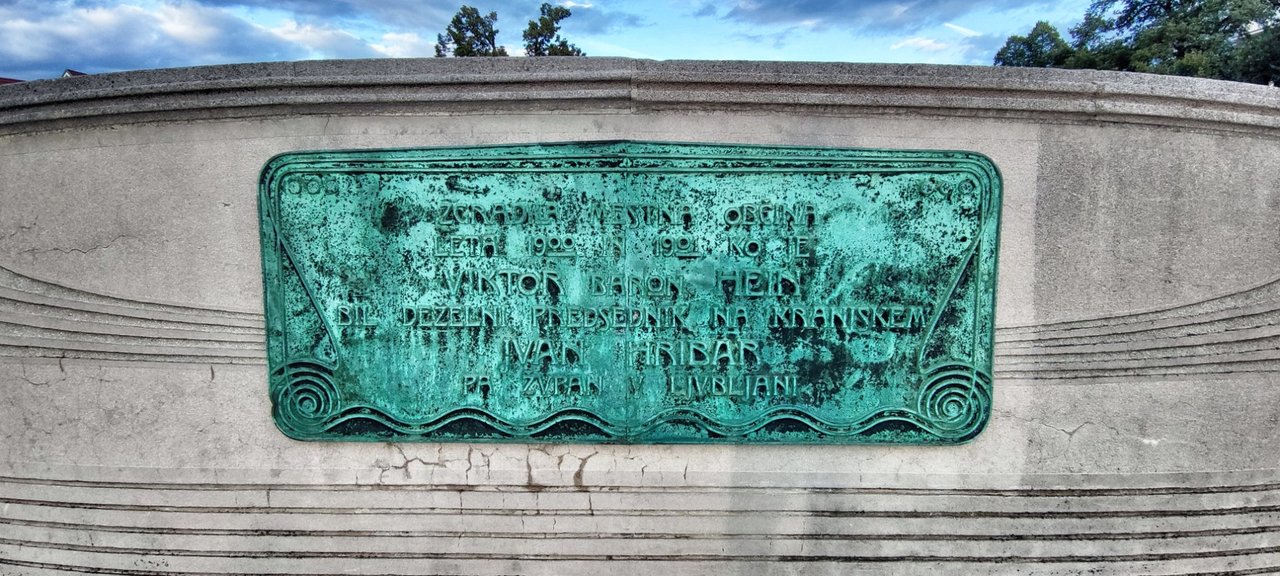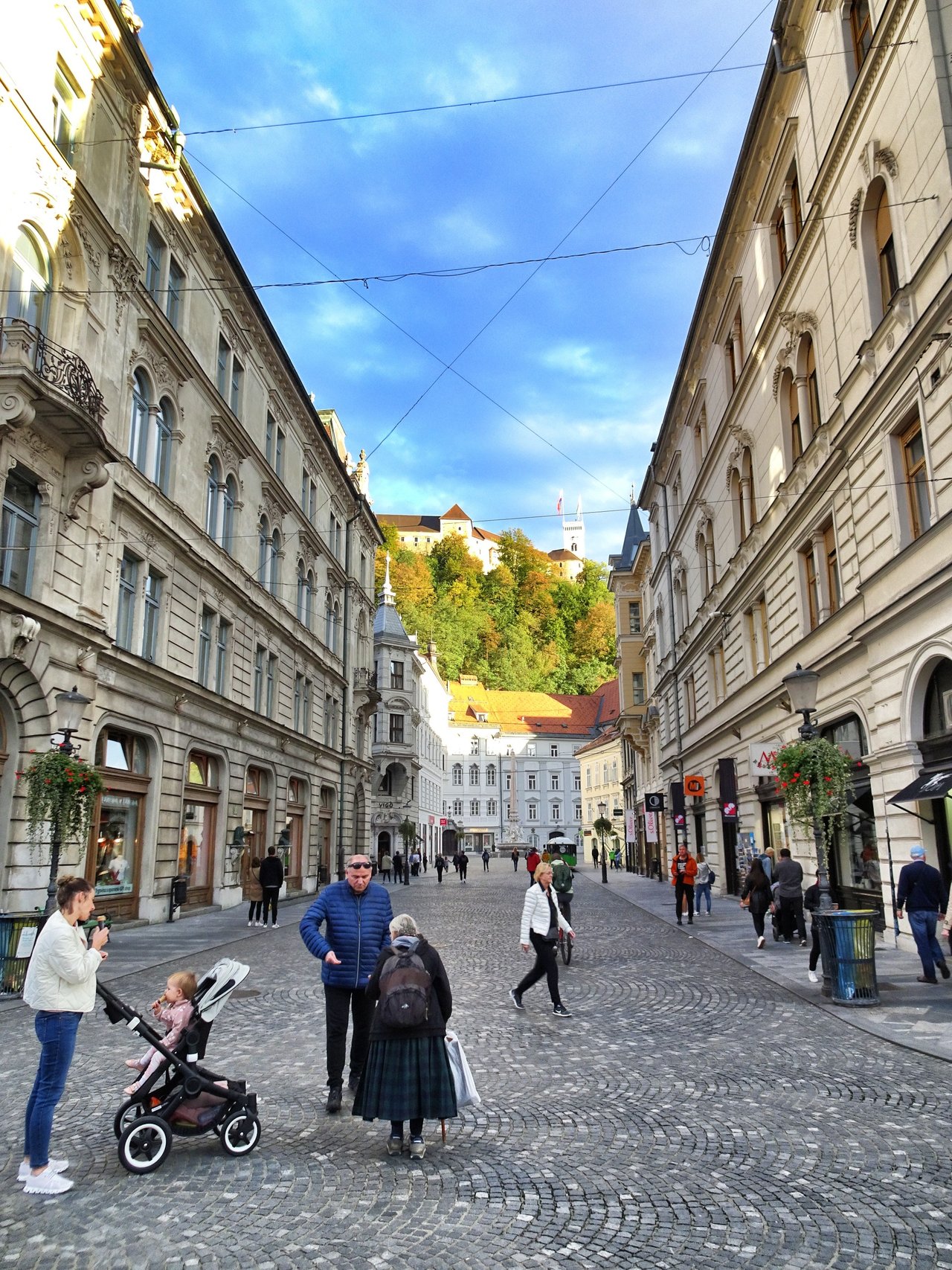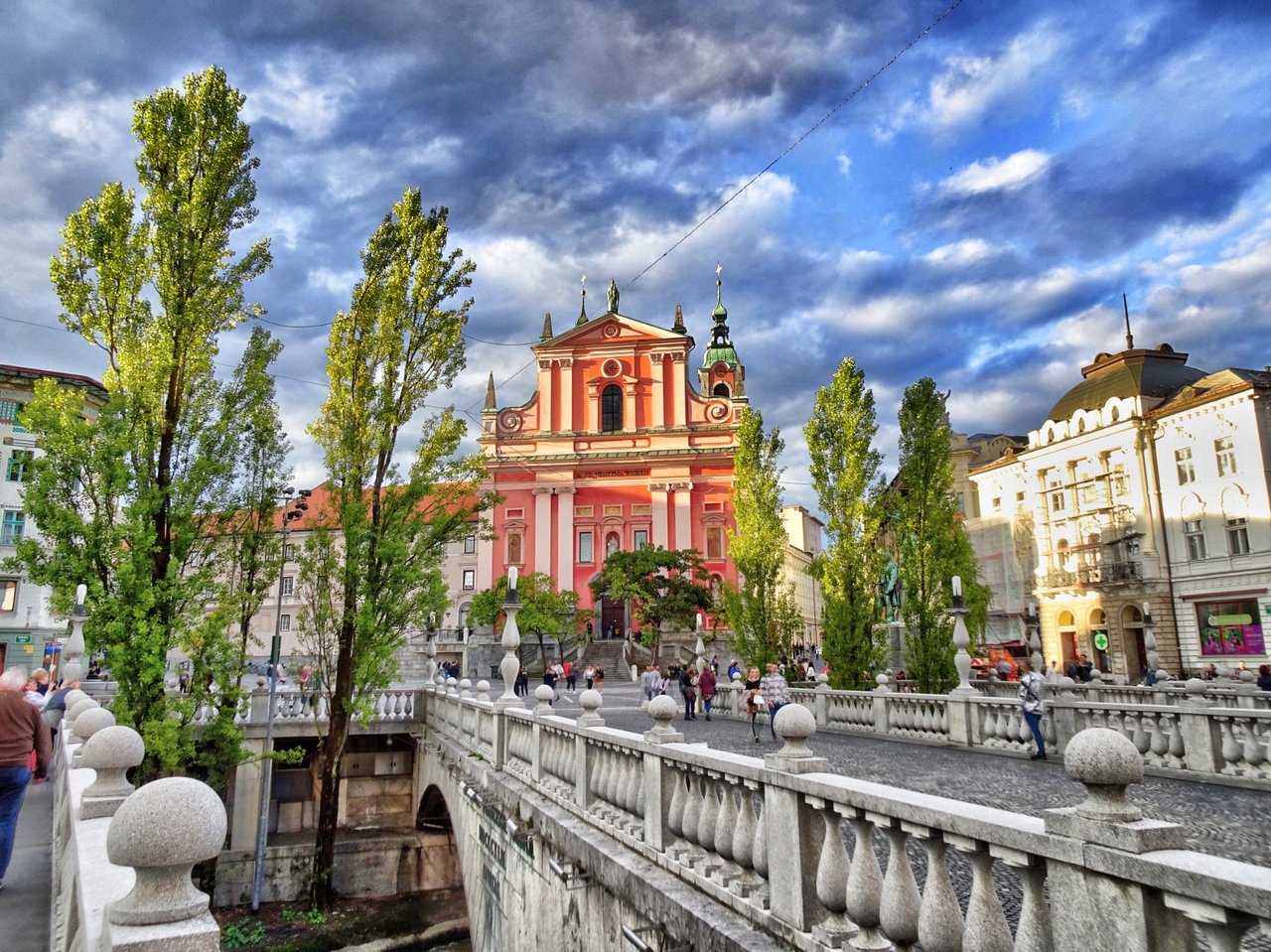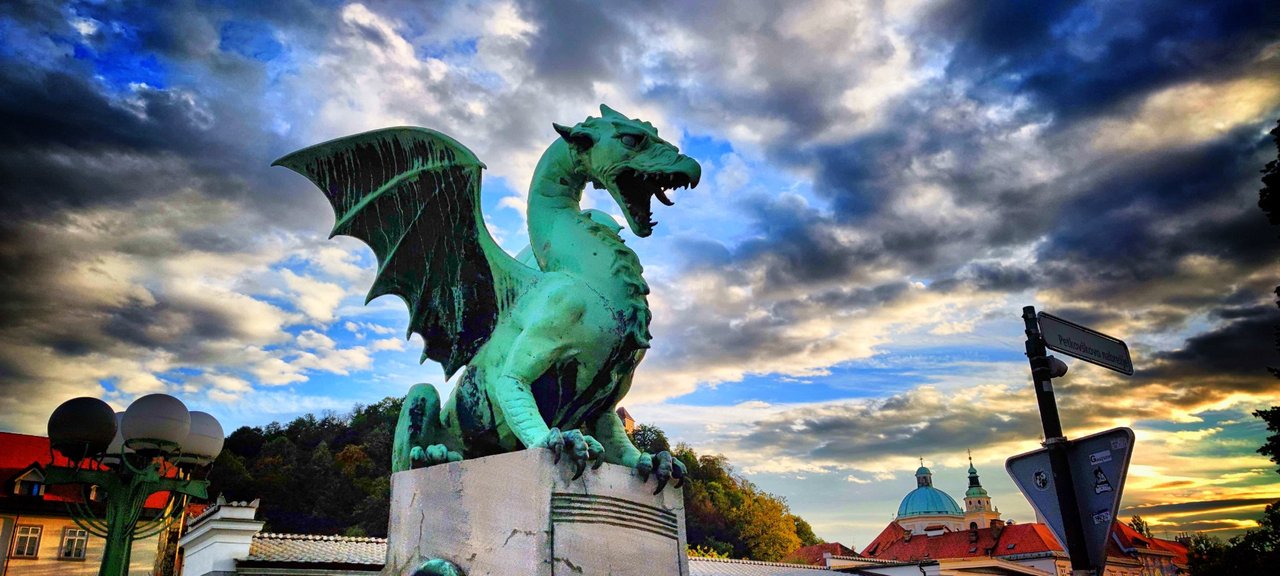We're on the road to the south now, leaving Czech and going to Slovenia. This country lies between the Alps and the Adriatic Sea. The small country offers bizarre mountain landscapes, a sunny coastline and small towns with a southern flair. The capital Ljubljana lies on a wonderful little river - a city like Venice, only much more friendly.
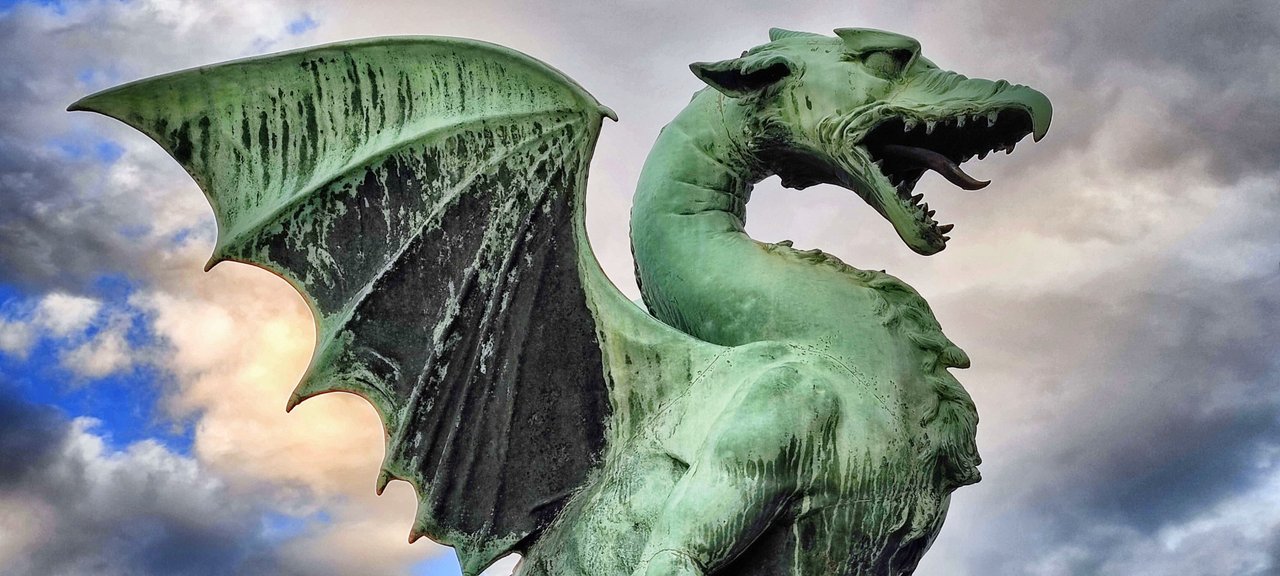 One of the Game of Thrones dragons
One of the Game of Thrones dragons
Slovenia sometimes has a hard time standing out among the other nations of Europe. The country is small, and people with incomplete knowledge of geography tend to confuse it with Slovakia. Yet it lies between the Alps and the Adriatic Sea, so it has real mountains and a real sea. Nevertheless, people may know that the capital is called Ljubljana. It is hardly known that the rock band Laibach comes from here and that the band's name only means Ljubljana.
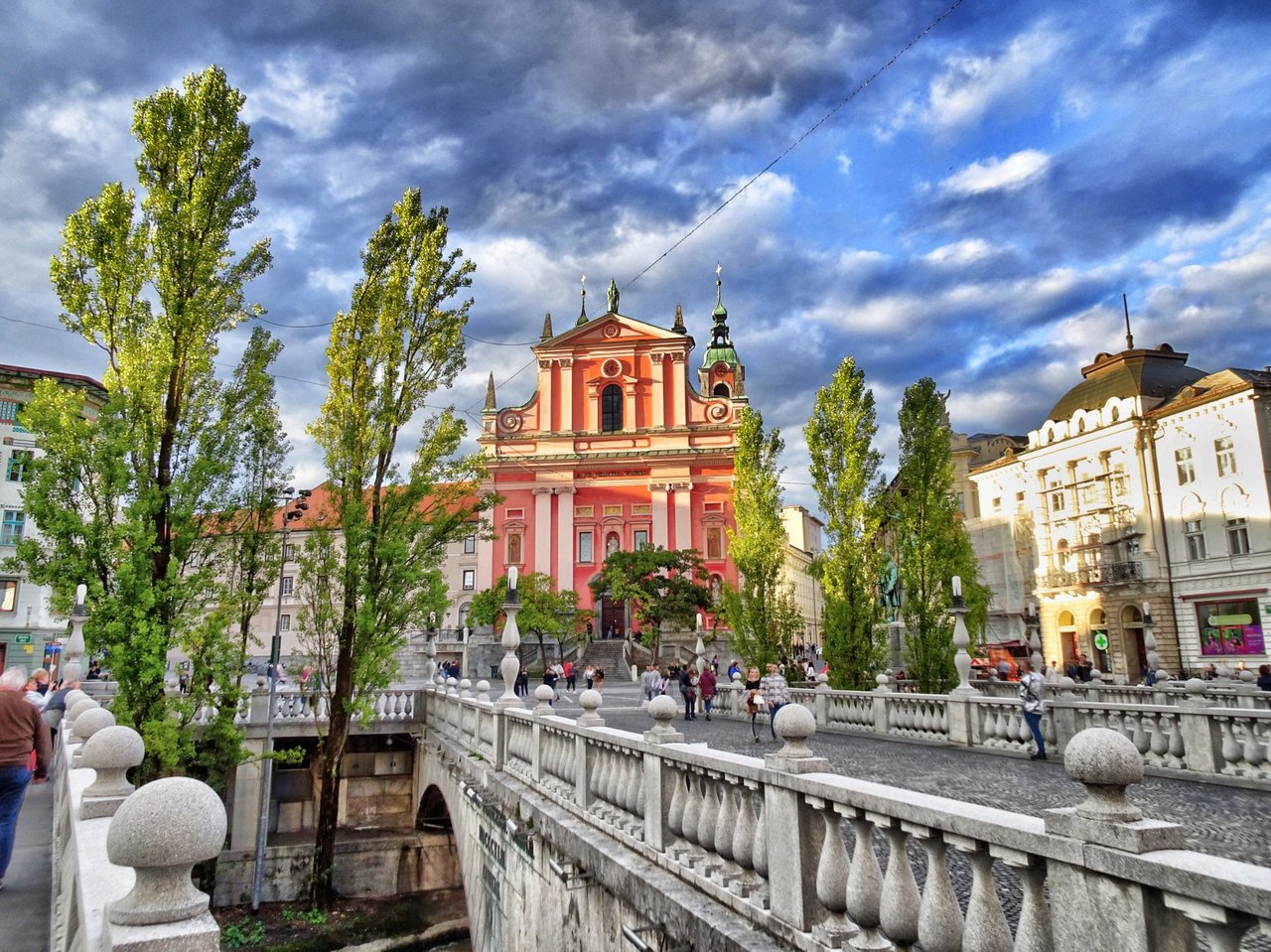 It's a very beautiful town
It's a very beautiful town
Small and so beautiful
No wonder, because Slovenia is only 20,000 square kilometers and would be one of the small states when it was in Germany. But the capital city alone, which we are visiting today, has a lot to offer: You arrive here from Austria on an almost new highway and then suddenly find yourself in an old, but incredibly well-kept city, the likes of which certainly don't exist again between Copenhagen and Athens.
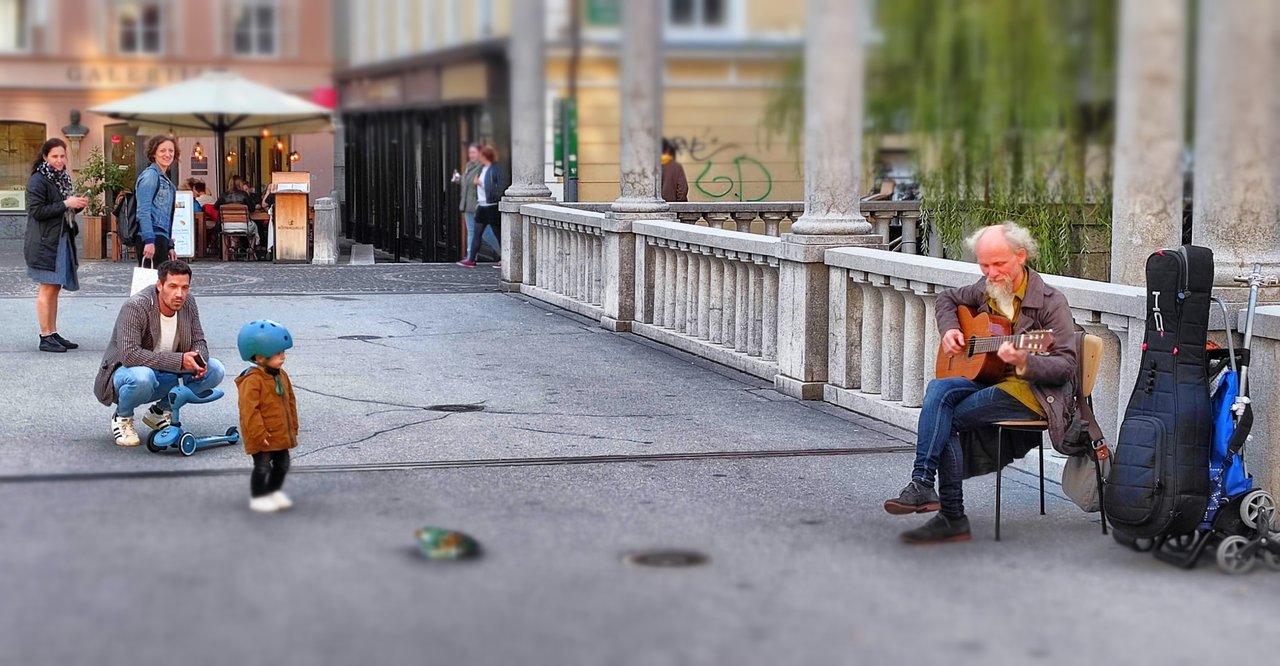 A star and his first fan
A star and his first fan
Ljubljana is built in the Austro-Hungarian "K. u. k." style, adorned with details that are more in keeping with the Venetian-like style of the Adriatic coast. The city, with its 280,000 inhabitants, is clearly Slovenia's heart: after the Habsburgs left, or rather had to leave, their heirs did not storm the legacy, but appropriated it.
Today, along the Ljubljanica River, also called the "River with Seven Names" because of its seven tributaries, there are Art Nouveau and Baroque facades, a candy-striped philharmonic hall, and coffeehouses like the "Kavarna," steak houses, barbecues grills, soccer pubs, and Italian resaturants.
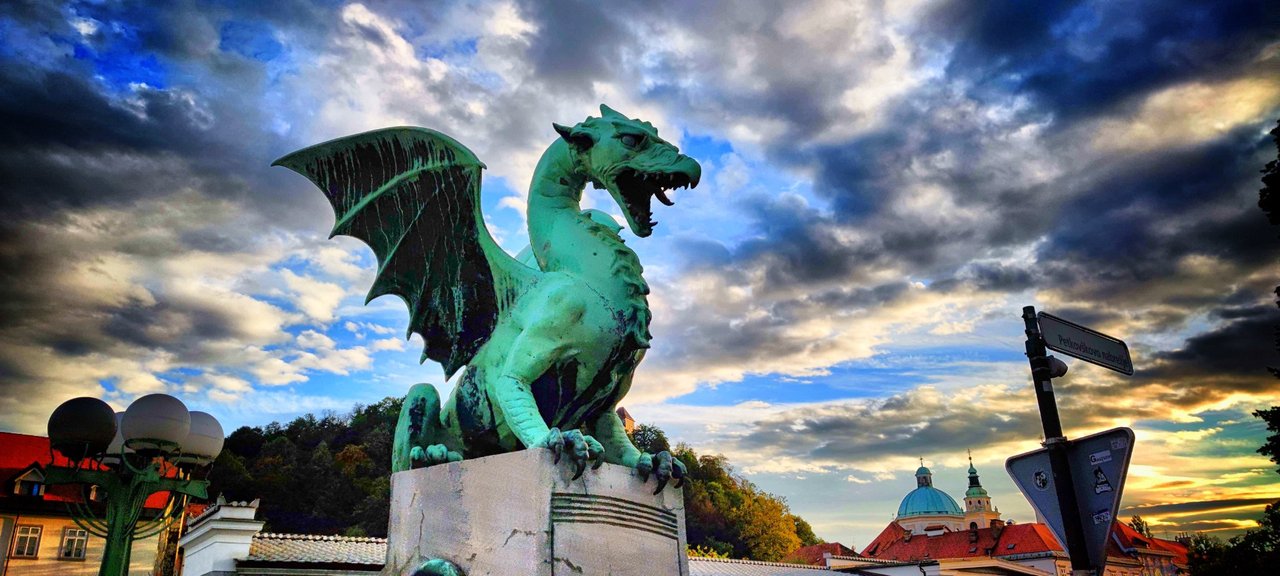 The sky calls his name
The sky calls his name
The city, a food mile
Basically, the whole street in the center of the city is a food mile. In good weather, life takes place outdoors, along the left and the right bank of thec Ljubljanica River in the old town, which has been restored and revitalized since the 1970s. A medieval castle towers over the city, and instead of walking through run-down streets between gloomy prefabricated buildings, you walk along bright, cobbled streets under wrought-iron balconies, under sweeping archways and past stuccoed Art Nouveau and Baroque facades.
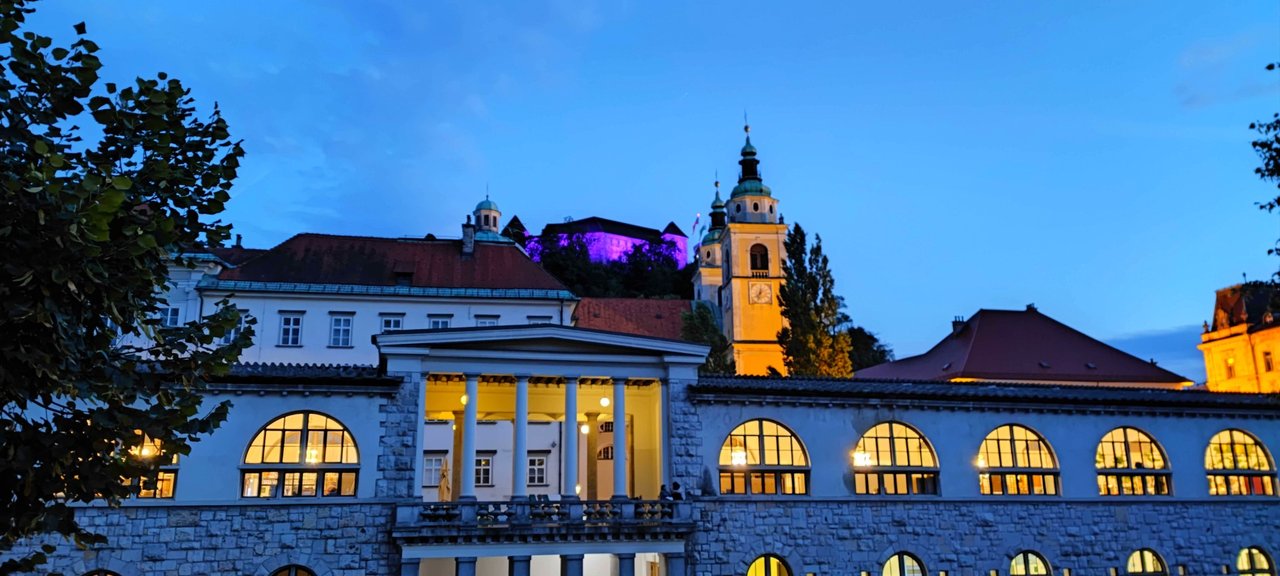 The castle after sunset
The castle after sunset
The old town along the Ljubljanca River is green, bright, clean - and above all, lively: Cafés, bars and pubs line the waterfront. The capital's inhabitants like to sit outdoors here, drinking kava, the strong Slovenian coffee, wine from the vineyards that can be seen dimly in the background of the city, or one of the local beers.
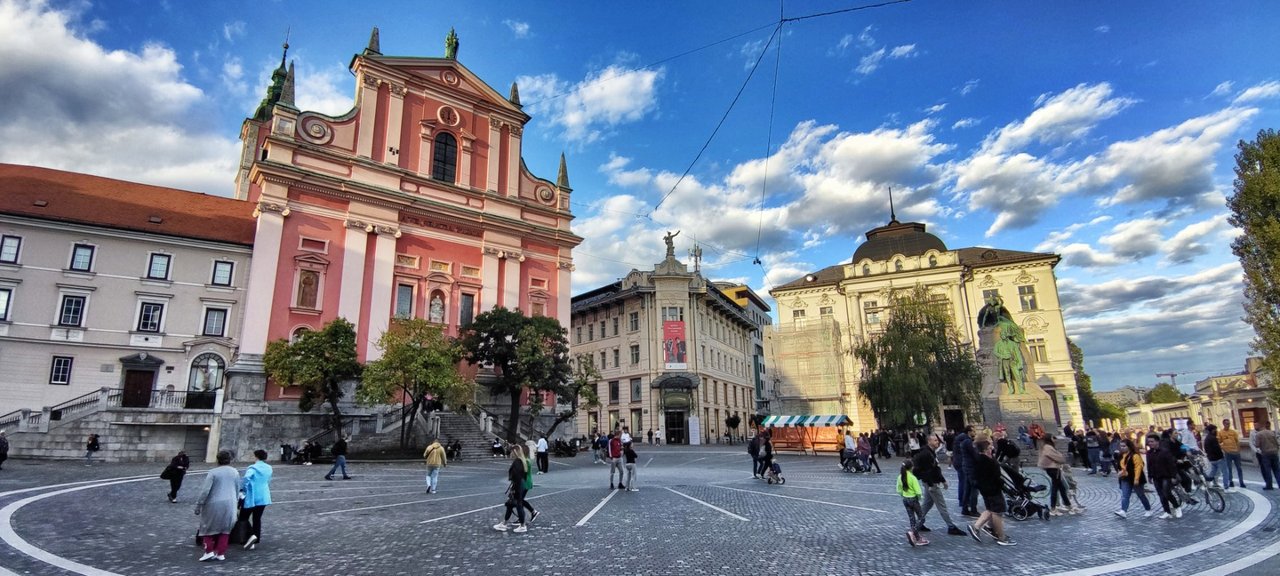 This is the central place
This is the central place
In the bars, cafes and restaurants, people often play music and party until after midnight, very noisy because Ljubljana counts a whopping 55,000 students among its residents. They flock here, to the most student-friendly city in the world, because the city lures them with all kinds of benefits: free transport, free Internet, cheap rents, renowned professors.
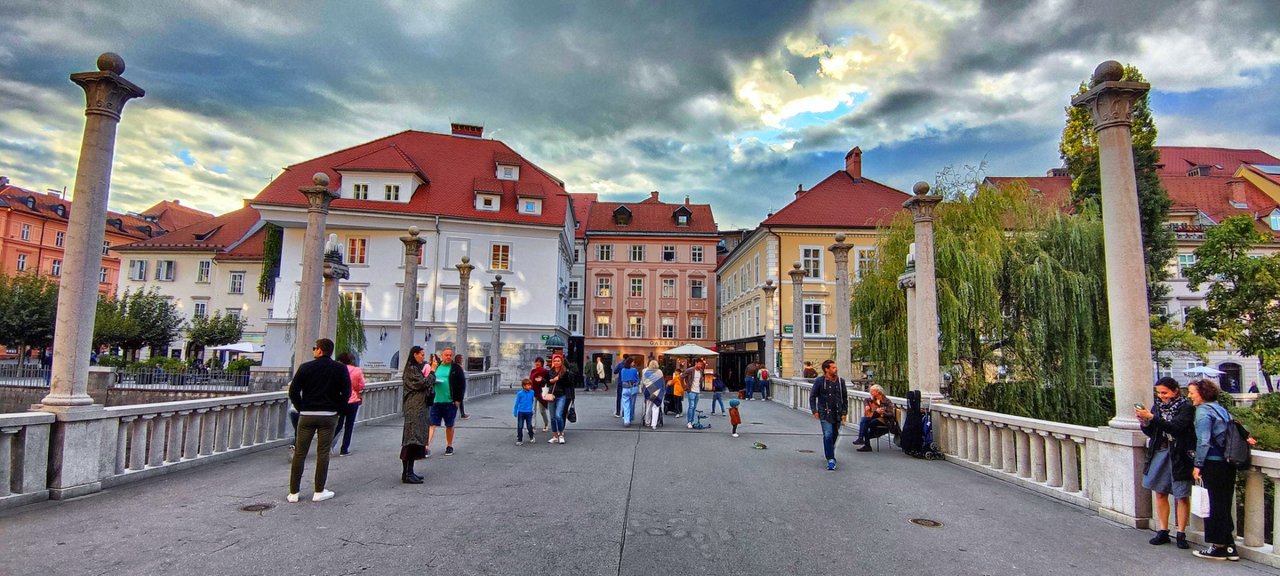 Every 100 meters are a bridge over the river of the seven names
Every 100 meters are a bridge over the river of the seven names
There's a bike for 3 euros a year, a shuttle service that picks students up from parties, free sports and even free lunch.
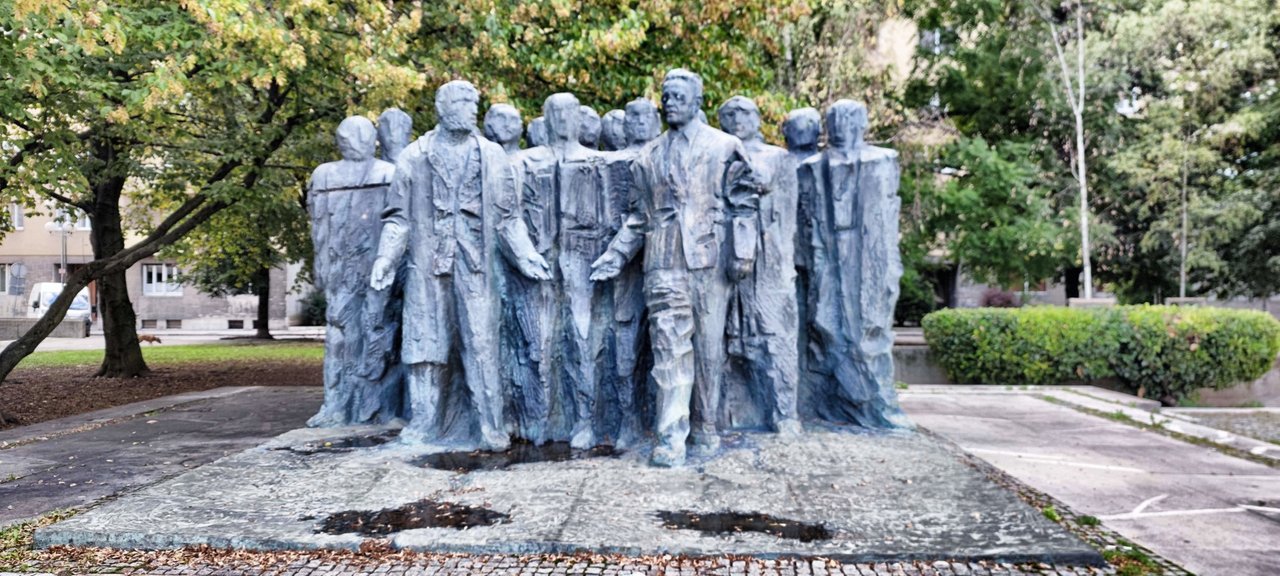 In th suburbs you will find some sculptures from the socialist era
In th suburbs you will find some sculptures from the socialist era
Tasting Slovenian winde
Visitors have to pay, but they are allowed to taste Slovenian wines, for example in the wine tavern "Movia" right next to the town hall, where dozens of first-class local varieties have been available for what feels like 100 years - a discovery for connoisseurs. Because what is hardly known is that Slovenian wines can compete with Italian or Austrian wines.
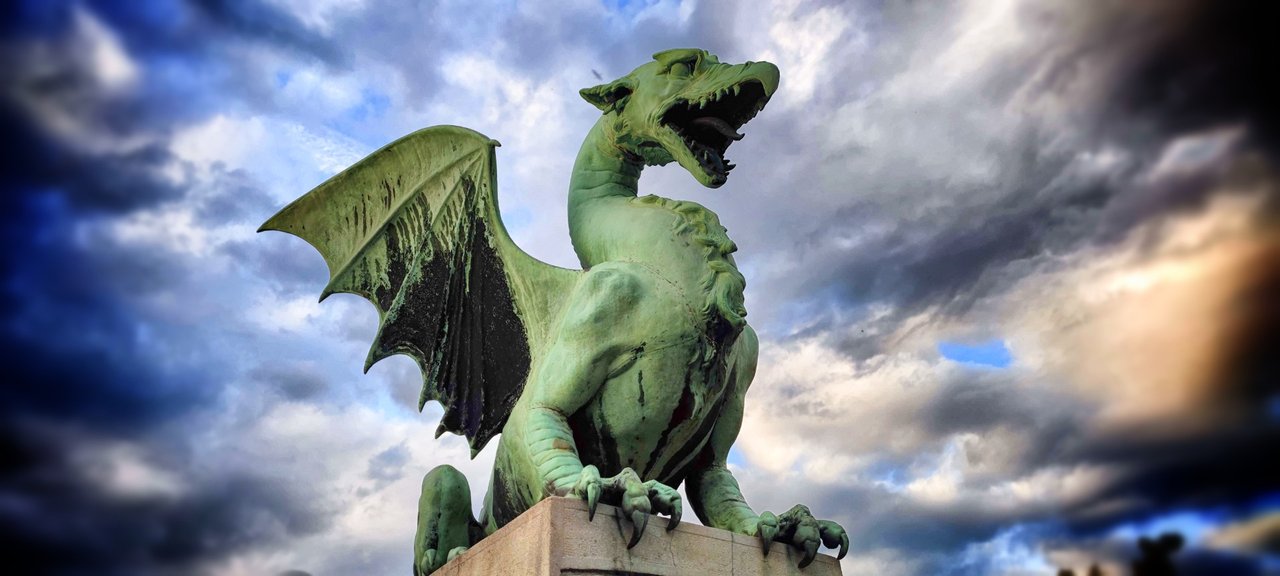 But the older ones win
But the older ones win
Ljubljana's landmark is its castle, perched atop the castle hill. It received its present appearance under the Habsburgs. From the castle tower you have a perfect view of the city and the surrounding countryside.
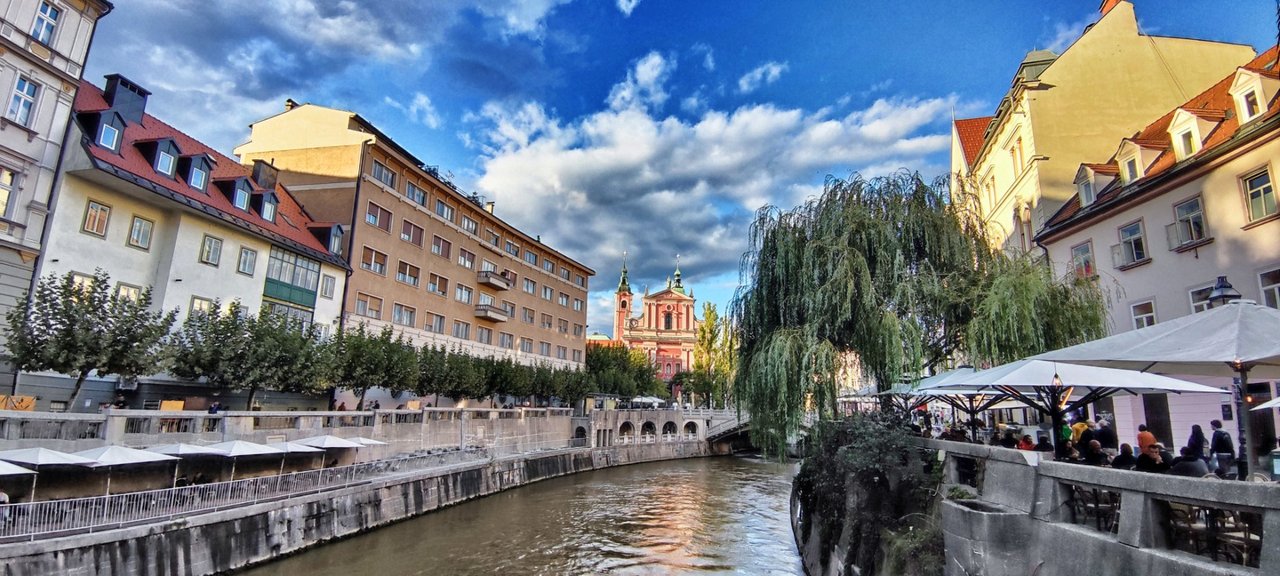 The nice river
The nice river
Past the 14-story Neboticnik Tower, which was briefly the tallest building in Central Europe when it was completed in 1933, the view extends to the Alps and, to the south, to the Karst. Behind the furrowed Karst hills lies the coastal land, which was Italian for centuries. Translated with DeepL
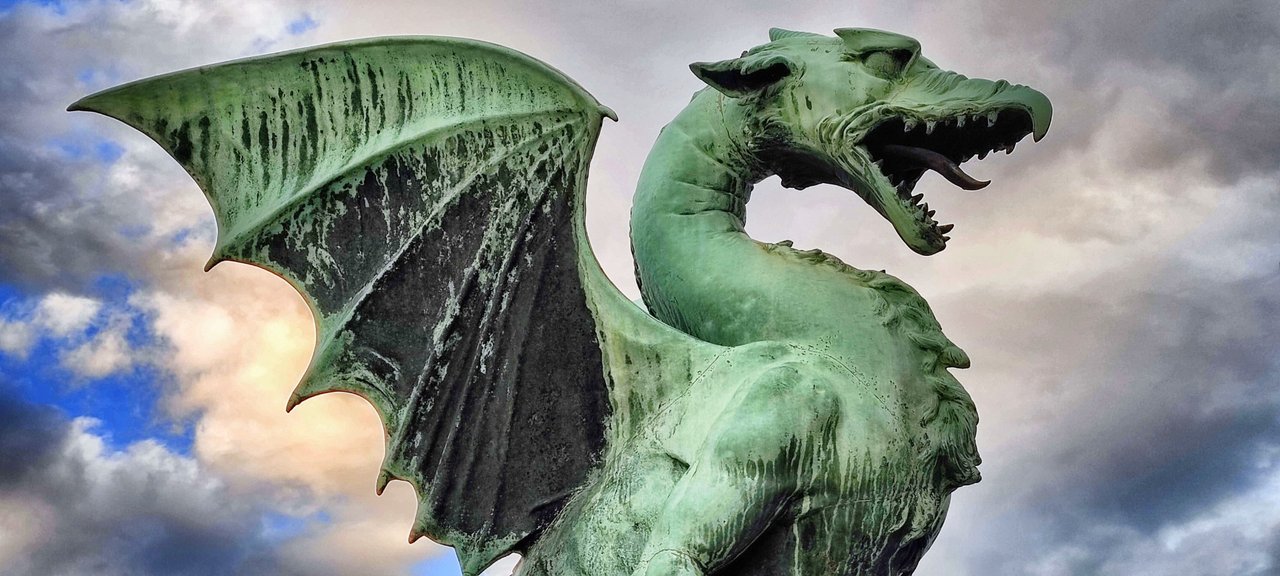 One more dragon
One more dragon
 Two of them
Two of them
But the city's most famous landmark, however, was built by an Austrian. The Dragon Bridge (Zmajski most), with its famous figures that look like something out of "Game of Thrones," awaits visitors in the middle of the pedestrian zone. A must: Only when you have your picture taken with one of the dragons on the Dragon Bridge, you have really visited Ljubljana! The terrifying and almost realistic dragon figures are masterpieces that have captured the imagination of their viewers ever since the bridge has existed.
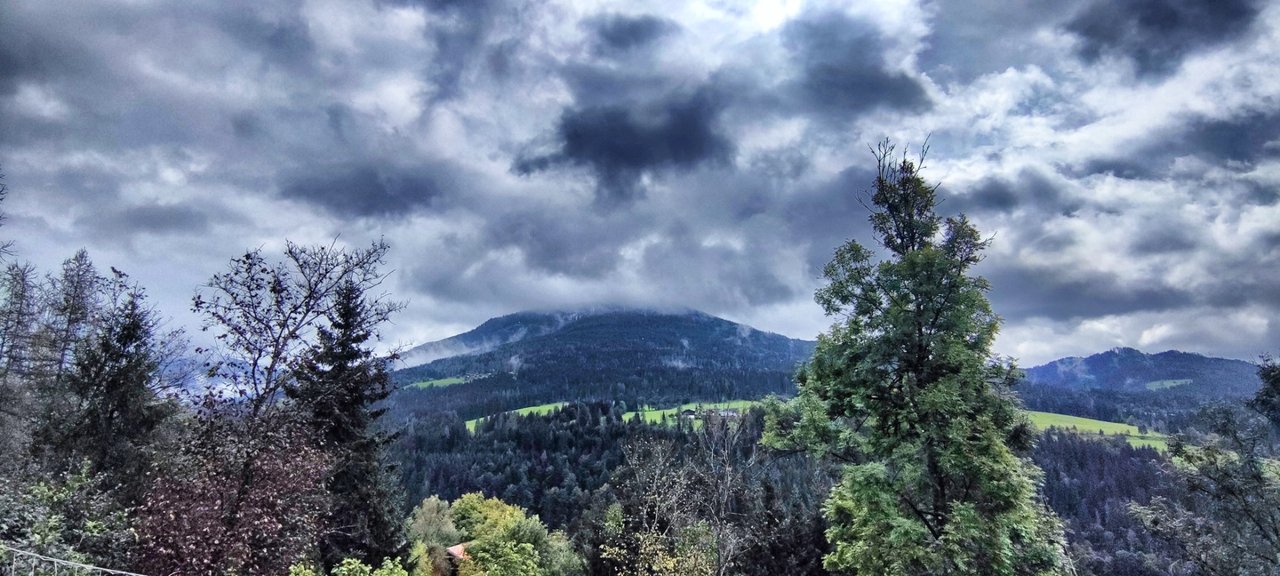 Mountains are all around the city
Mountains are all around the city
A bridge for the Emperor
What is less known is that the quite ordinary looking bridge is also a unique creation beyond that. The Austrian Joseph Melan created the masterpiece of Art Nouveau architecture at the turn of the 19th and 20th centuries; at that time it was the first reinforced concrete structure in Ljubljana and also the largest such bridge in Europe.
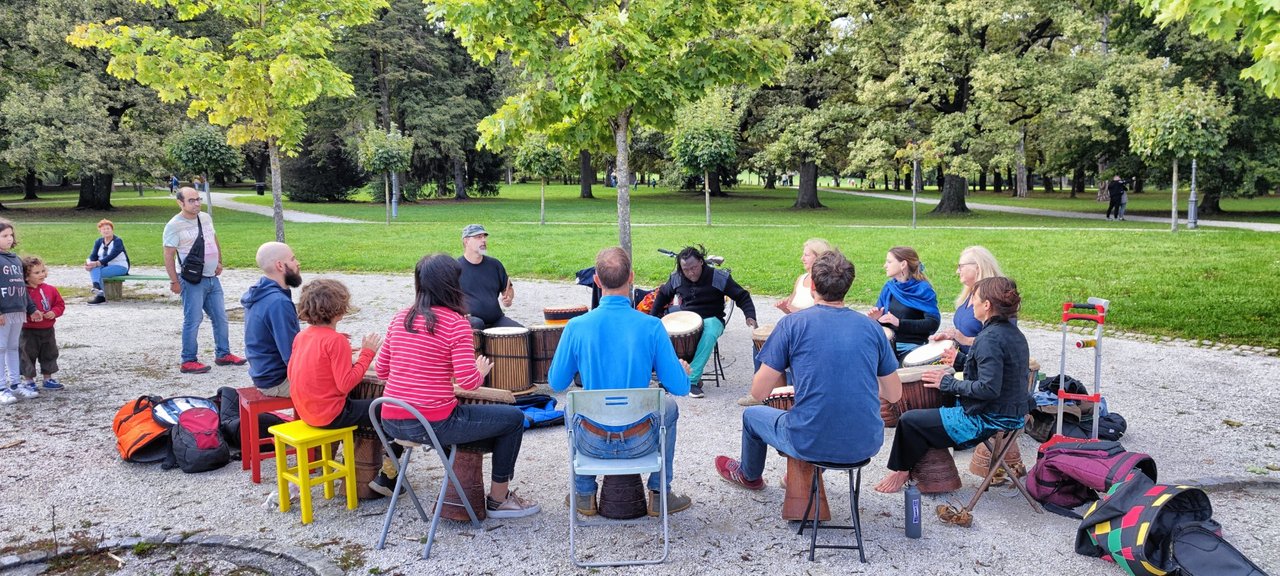 The are drumming for fun in a city park
The are drumming for fun in a city park
When it was opened, it was named the "Jubilee Bridge" on the occasion of the 40-year reign of the Austrian Emperor Franz Josef I. Instead of the dragon statues, winged lions were originally intended. However, the architect Jurij Zaninović, a student of the great Viennese master Otto Wagner, then decided to rather make dragons out of copper sheet. The lights on the bridge railing, which can still be seen today, are also from the original bridge equipment and were originally gas-powered.
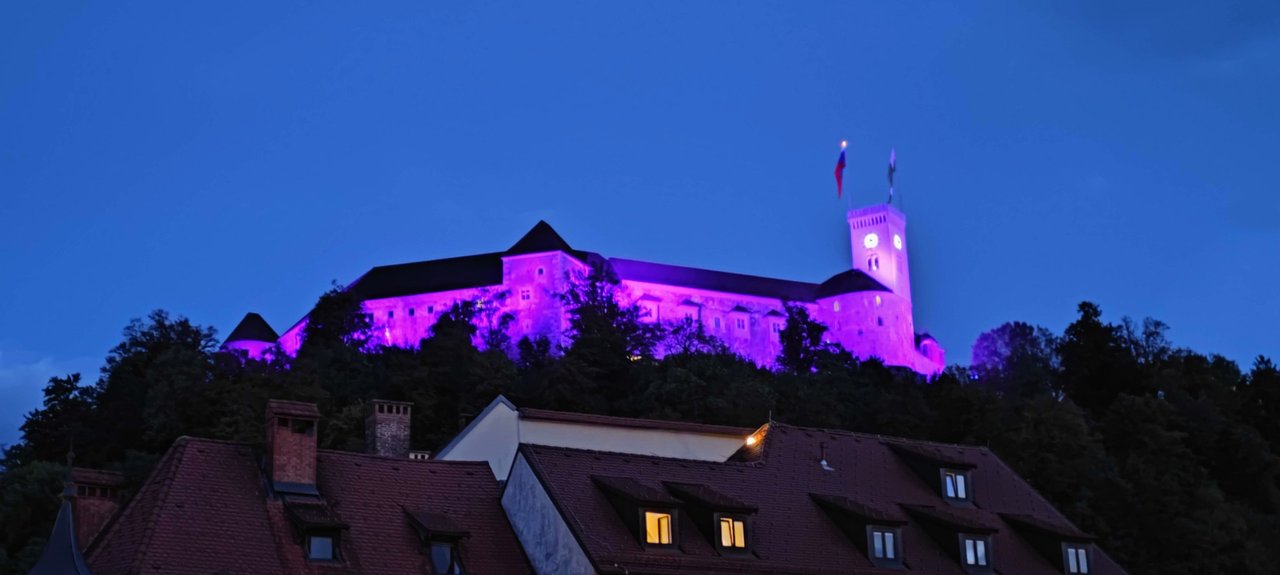 The castle by night, the color changed every two minutes
The castle by night, the color changed every two minutes
For tourists, Slovenia is an experience at any time of the year. Accommodation ranges from hotels, apartments, youth hostels to campsites. A popular destination for water sports enthusiasts is the Soca River with its tributaries. Here they can test their strength in canoeing or rafting. Canyoning through gorges and over waterfalls or rides on the hydrospeed, a floating bobsled, are also offered.
We`re now driving to the sea. Next stop: The great cave of Postojna.
More information is available on the Internet: www.slovenia.info
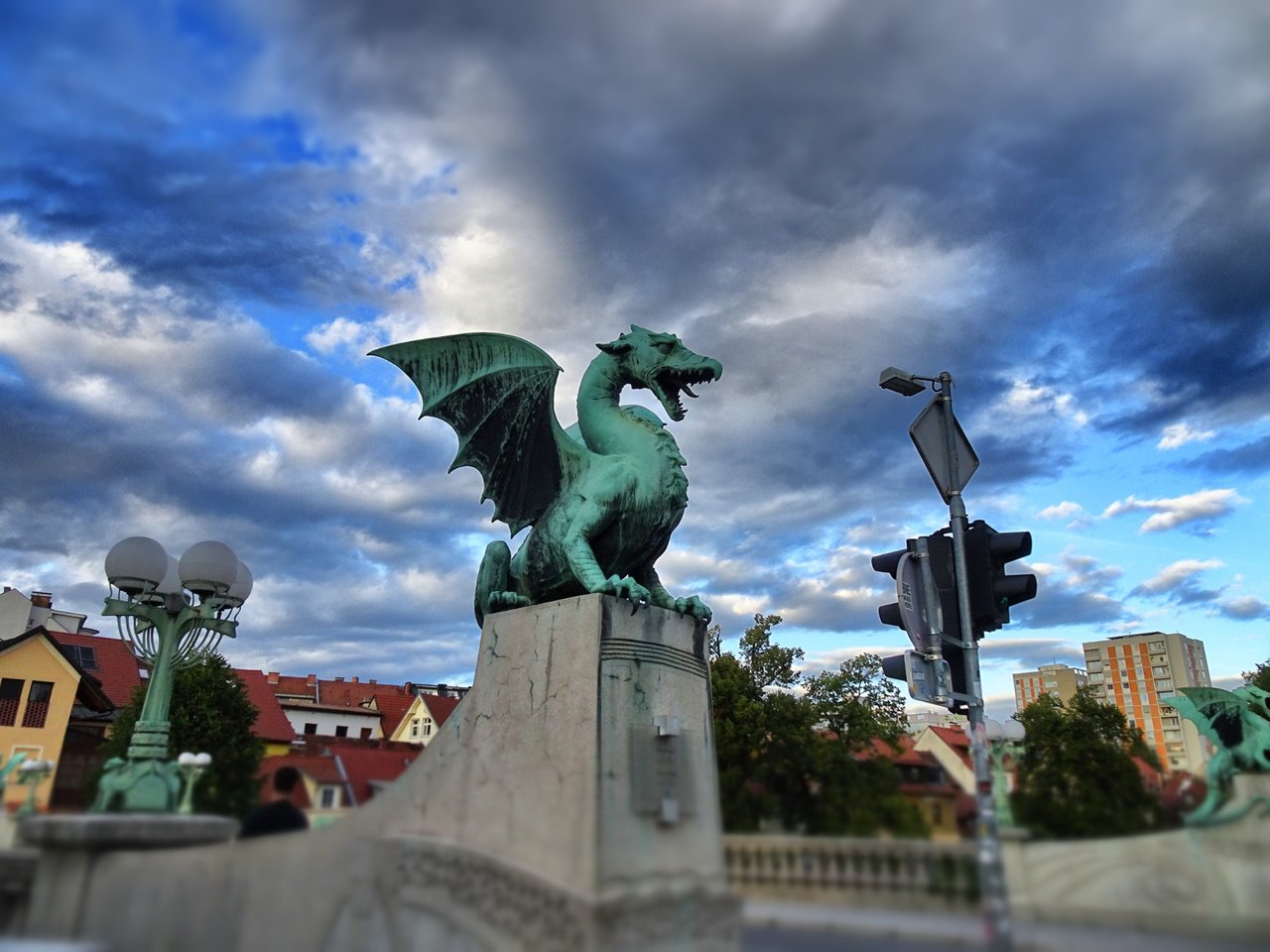 On the right: One of the "new" building from the socialist era
On the right: One of the "new" building from the socialist era
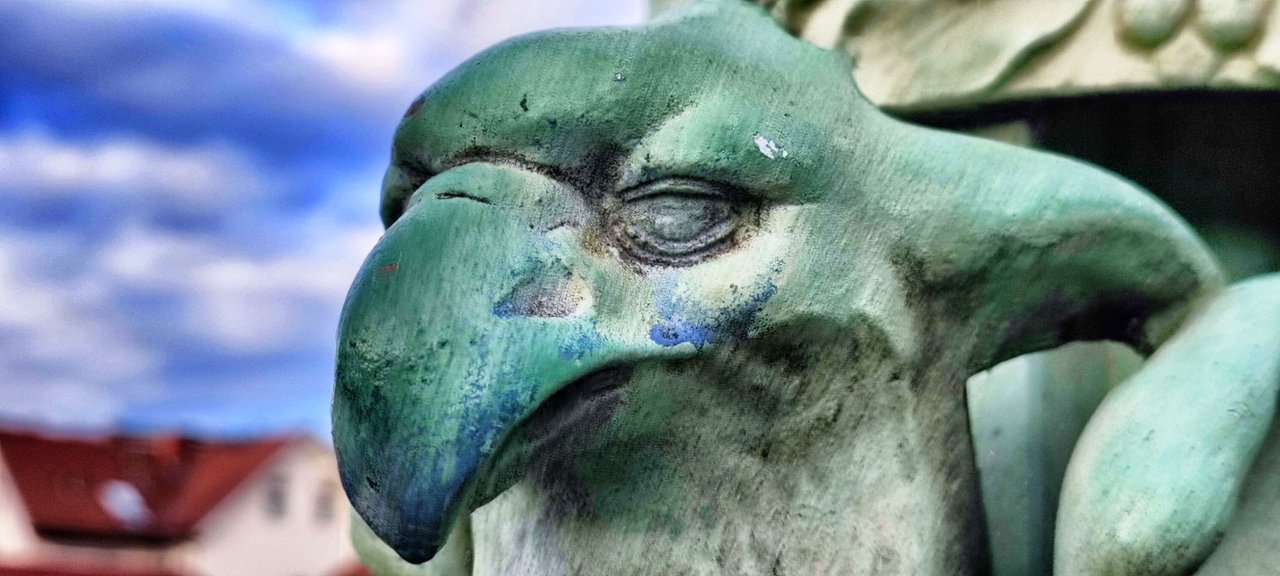 Nearer to the dragon
Nearer to the dragon
